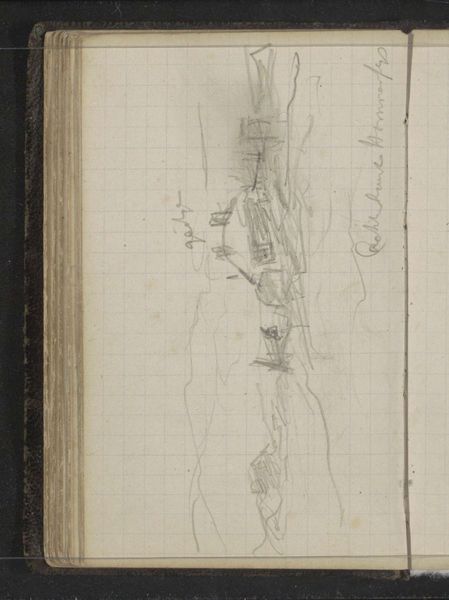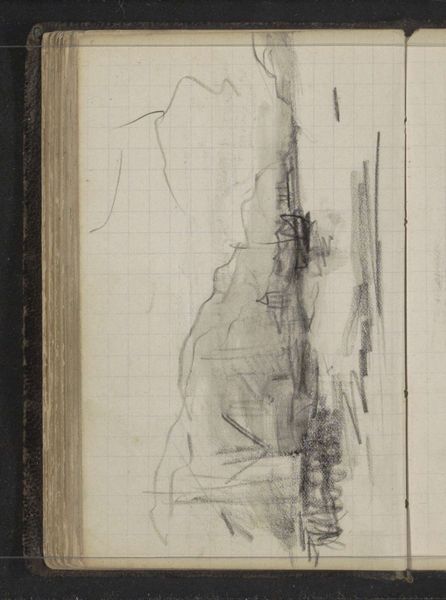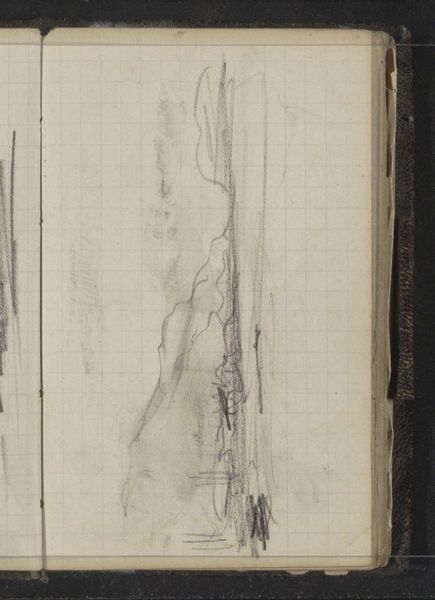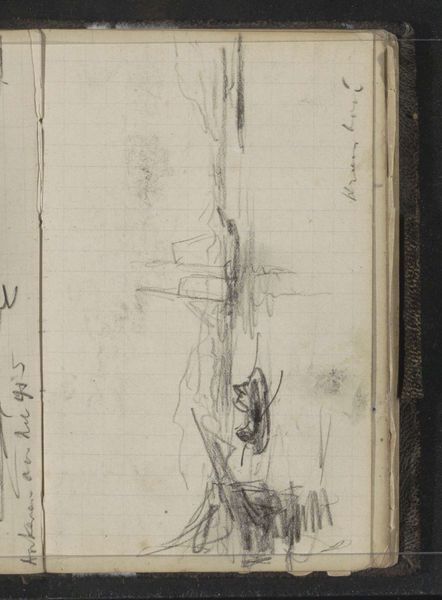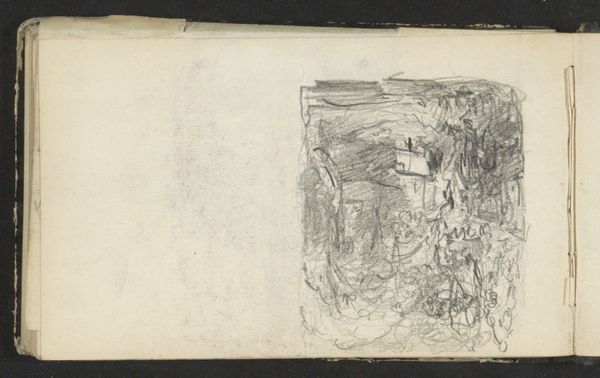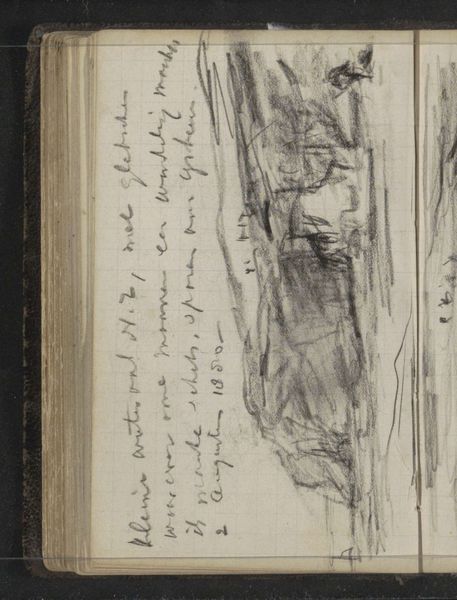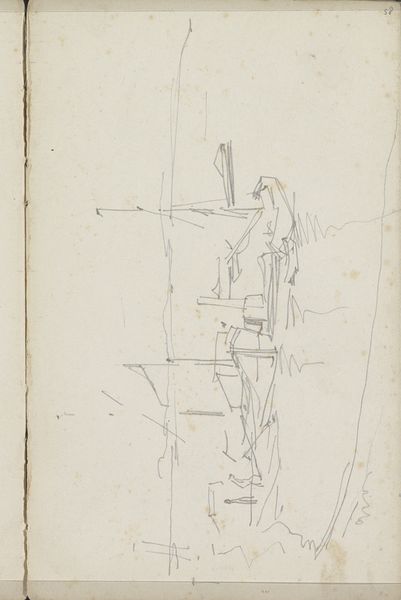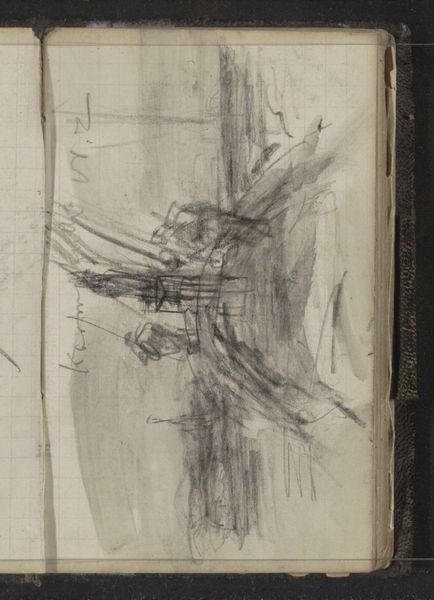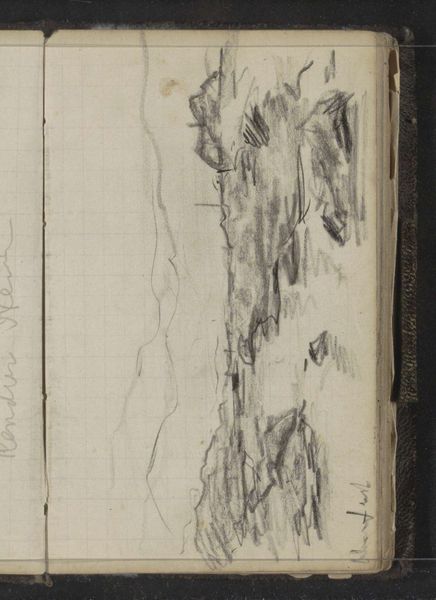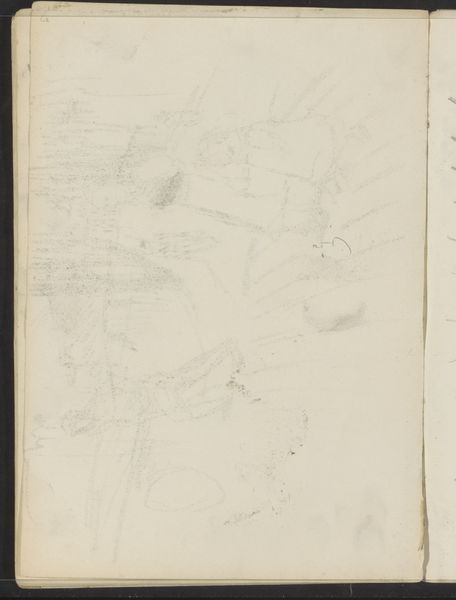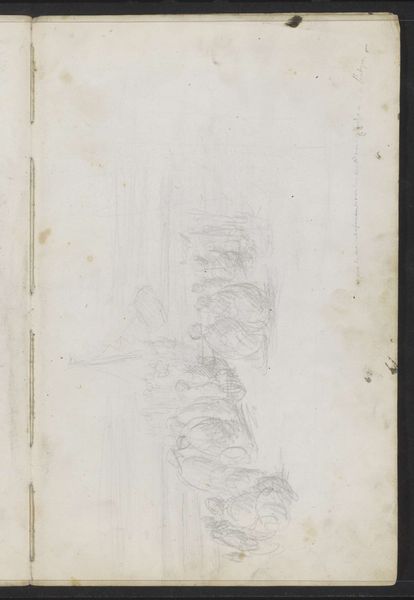
#
aged paper
#
toned paper
#
sketch book
#
incomplete sketchy
#
personal sketchbook
#
underpainting
#
watercolour bleed
#
watercolour illustration
#
sketchbook art
#
watercolor
Copyright: Rijks Museum: Open Domain
Curator: We are looking at "Bemanningsleden die ijsankers aanbrengen", or "Crew Members Installing Ice Anchors" by Louis Apol, made sometime between 1880 and 1887. It's a watercolor on toned paper and is held in the Rijksmuseum's collection. My immediate impression is one of precariousness. Editor: Absolutely, there’s a palpable sense of vulnerability. The hurried lines convey urgency against the stark, imposing background. It’s clearly a scene of labor, likely quite dangerous labor, rendered with an unfinished quality that highlights its rough reality. I’m interested in the context – what drove Apol to depict such a scene? Curator: Apol was known for his winter landscapes, but I think this goes beyond mere picturesque documentation. Consider the Netherlands' historical relationship with water, its constant battle against it. This drawing likely speaks to that struggle, illustrating the human effort required to maintain control over nature, and the infrastructure projects behind Dutch safety. Editor: It resonates with the tradition of landscape art then, yet adds this element of human intervention—even exploitation. Look at how the figures are dwarfed. It's not romanticizing nature, but showing how people try to wrestle with it. Are these possibly preliminary studies for larger paintings or commissions perhaps? Curator: It’s part of a sketchbook, which tells us it was likely personal—a record of observations rather than a grand statement for public consumption. This might allow us to read it with less concern for overt propagandistic purposes that might have shaped larger pieces and state commissions. It’s raw and direct because of that intimacy. Editor: Exactly. And because we know this was in his sketchbook, that invites an interesting parallel between art as a form of labor in contrast to what's being depicted. It adds to my appreciation, especially given what appear to be notations— perhaps for later reference? Curator: Perhaps even studies for other compositions? Ultimately, it captures a fleeting moment in a crucial, ongoing narrative: the Dutch relationship to their environment. The fragility of the medium mirrors the delicate balance these workers maintained. Editor: I agree. Thinking about precariousness to close, the unfinished quality and vulnerable scale of the work opens up this question about who are the figures and to what economic bracket do they belong, what circumstances might lead to a moment, a situation of this nature. Curator: Very compelling analysis. It reminds us of the layered stories a sketch can tell, from artistic process to social commentary. Thank you. Editor: Indeed. A stark reminder of the intersection between landscape, labor, and human resilience. Thank you.
Comments
No comments
Be the first to comment and join the conversation on the ultimate creative platform.

